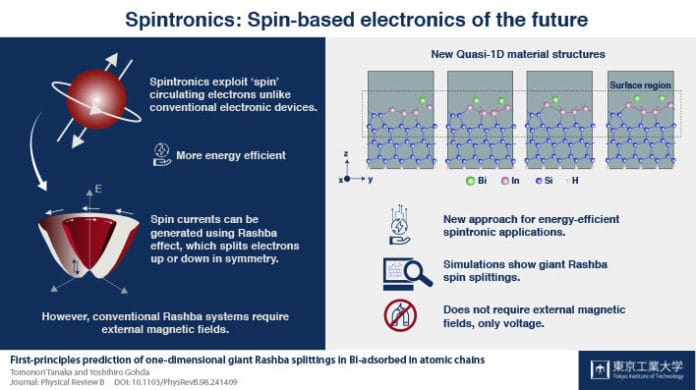Currently used electronics mainly relies on their electric charge but the fact- these electronics have already reached their physical limits.
In any case, electrons bear another natural quantum-physical property called spin, which can be translated as a sort of angular momentum and can be either “up” or “down”.
While regular electronic gadgets don’t deploy the pin of the electrons that they utilize, spintronics is a field of study in which the spin of the leading electrons is vital. Serious improvements in execution and new applications can be accomplished through spin currents.
Scientists are finding ways to generate spin currents with material structures that possess electrons with desirable spin properties. Here, Rashba-Bychkov effect (or simply Rashba effect) becomes handy when it comes to split spin-up and spin-down electrons due to breakings in symmetry.
Considering this, scientists at the Tokyo Tech have discovered a new mechanism for generating a spin current without energy loss from a series of simulations for new quasi-1D materials based on bismuth-adsorbed indium that exhibit a giant Rashba effect.
Associate Professor Yoshihiro Gohda said, “Our mechanism is suitable for spintronic applications, having an advantage that it does not require an external magnetic field to generate nondissipative spin current. This advantage would simplify potential spintronic devices and would allow for further miniaturization.”
The researchers conducted simulations based on these materials to demonstrate that the Rashba effect in them can be large and only requires applying a certain voltage to generate spin currents. By comparing the Rashba properties of multiple variations of these materials, they provided explanations for the observed differences in the materials’ spin properties and a guide for further materials exploration.
Gohda said, “This type of research is very important as radically new technologies are required if we intend to further improve electronic devices and go beyond their current physical limits. Our study should be important for energy-efficient spintronic applications and stimulating further exploration of different 1D Rashba systems.”
The study is published in the journal Physical Review B.
